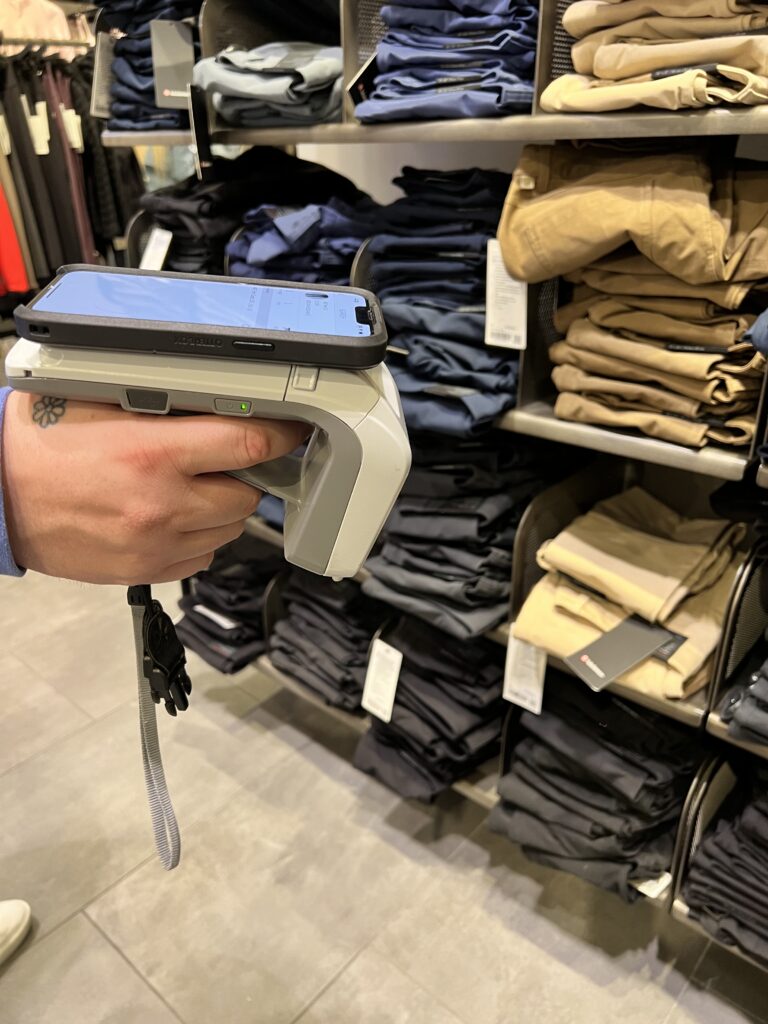Most retailers have had basic Wi-Fi in their stores for a while now but are realizing the time has come to upgrade. While some customer use is there, upgrades are necessary to help staff facilitate better customer experiences, gather valuable insights, and improve operational efficiency. The features and functionality they are deploying include:
High-density Wi-Fi
Mobile Device Inventory Tracking
Expert Location Tracking
Guest In-Store Navigation
Business Analytics
With staffing challenges continuing to plague retailers, much of the desire behind upgrading retail Wi-Fi networks is to improve staff productivity and have employees focus on higher-valued tasks. If organizations can use technology to assist staff in delivering a higher-quality shopping experience to guests, why not take advantage of the tools available?
Retailers use Wi-Fi data to improve staff productivity by leveraging insights gathered from their Wi-Fi analytics. Here are some ways they accomplish this:
Understanding Shopper Behavior
Retailers examine Wi-Fi data to understand shoppers’ preferences, buying habits, and movement patterns within the store. They then use this information to assist in optimizing inventory management, staffing levels, and hours of operation to improve productivity.
Enhancing Space Allocation
Using Wi-Fi to track customer movement, retailers can get an understanding of where customers spend their time in the store. This insight provides better space allocation to optimize product placement and store layout.
Improving Communication
Reliable connectivity with fast Wi-Fi enables real-time communication among retail staff. Managers can access information instantly, communicate with employees efficiently, and focus on customer needs and critical issues, thereby increasing employee productivity and improving store operations.
Empowering the Workforce
Retailers can empower their workforce by adopting digital solutions that provide fast connectivity and significant bandwidth. This enables employees to address common pain points, access information quickly, and deliver frictionless store experiences, ultimately boosting productivity.
Personalized Customer Engagement
Wi-Fi data allows retailers to engage with customers by offering personalized notifications of special offers based on their preferences and behaviors. This targeted approach enhances customer experiences and drives sales, contributing to improved staff productivity.
Many retailers know they need to improve their Wi-Fi network. But it’s important to gather some comprehensive answers that will facilitate smoother project execution and ensure you’re making the right considerations. The following checklist will help you plan your Wi-Fi upgrade project.
1. Business Requirements and Goals
What are your primary objectives for the Wi-Fi network? (e.g., enhancing customer experience, supporting business operations, data analytics)
Do you have any specific challenges or pain points in your current Wi-Fi infrastructure that you aim to address?
2. Technical Specifications
Do you have existing network infrastructure, and if so, what are its specifications and limitations? Note that one limitation might be the internet circuit (broadband, cellular, etc.). This is a serious consideration as the connectivity feed could be a bottleneck when upgrading the Wi-Fi network.
What types of devices and technologies do you anticipate connecting to the network (both currently and in the future)?
3. Security and Compliance
What are your specific security requirements and compliance standards that the network must adhere to?
Do you have any existing security protocols or equipment that the new Wi-Fi network needs to integrate with?
4. Customer Engagement and Analytics
How do you plan to use the Wi-Fi network for customer engagement and analytics?
Are there any specific data points or customer behaviors you’re interested in tracking?
5. Scale and Scope
Can you provide details on the number of locations, their sizes, and geographic distribution?
What is the expected number of users and devices connecting to the network in each location?
6. Budget and Financial Considerations
What is your budget for this project, and how flexible are you on costs?
Are there any financial constraints or ROI expectations that we should be aware of?
7. Timeline and Milestones
What is your desired timeline for deploying the Wi-Fi network across all locations?
Are there specific milestones or phases of the project that are particularly critical?
8. Support and Maintenance
What level of support and maintenance are you expecting post-deployment?
Do you have in-house IT staff to manage the network, or will you require ongoing external support?
9. Future Expansion and Upgrades
Do you have any plans for expanding your retail chain or upgrading your technology infrastructure in the near future?
How important is scalability and the ability to integrate new technologies to your organization?
Being prepared to discuss these aspects in detail will help ensure that the organization you select to deploy your Wi-Fi network fully understands your needs, expectations, and the context in which the network will operate. This mutual understanding is crucial for achieving a successful deployment and a long-term partnership.
If you’re responsible for deploying or upgrading your Wi-Fi network for your retail chain, there are several critical questions to address as you look for an organization to do the deployment. Ensuring that deployment partner has the capability, experience and resources to manage the challenges of a nationwide deployment is critical.
Key questions for your Deployment Services Partner:
1. Experience and Expertise
What experience does the organization have with nationwide or regional Wi-Fi deployments, specifically in the retail sector?
Ask for references from past projects similar in scale and complexity.
2. Network Design and Implementation
What is the approach used for network design for retail environments to ensure coverage, capacity, and scalability?
What strategies are used to handle high-density areas and manage interference in crowded locations?
Discuss how to ensure the Wi-Fi network can support both current and future applications.
3. Security Measures
What security protocols and measures are implemented to protect customer data and the business’s operational network?
How is compliance with data protection regulations (e.g., GDPR, CCPA) in the deployment of Wi-Fi networks ensured?
4. Customization and Integration
How can the solutions be customized to meet specific operational needs and integrate with existing IT infrastructure?
What capabilities are offered for personalized customer experiences through Wi-Fi analytics and marketing integrations?
5. Maintenance and Support
What type of ongoing maintenance and support services are offered post-deployment?
How are network updates and troubleshooting handled, especially across a national footprint?
What is your response time for critical issues affecting network performance or security?
6. Scalability and Futureproofing
Can the network infrastructure support upgrades to newer Wi-Fi standards (e.g., Wi-Fi 6, Wi-Fi 6E) without major overhauls?
What other considerations should be made as it relates to scalability and adaptation of future technological advancements and demand?
7. Cost
How is the pricing structured, and what are the expected costs for a deployment of this scale?
8. Project Management and Timeline
What is the proposed timeline for the deployment, and how are large-scale projects managed to ensure timely completion?
How is communication with clients handled throughout the project, and what level of involvement is required from the client-side?
Next Steps
Addressing these areas will not only help in selecting the right organization for upgrading your retail Wi-Fi network but also set the foundation for a successful implementation that meets both current and future needs of your organization.
If it’s time to consider upgrading your Wi-Fi network across multiple locations or across the country, contact us to schedule a discussion.


